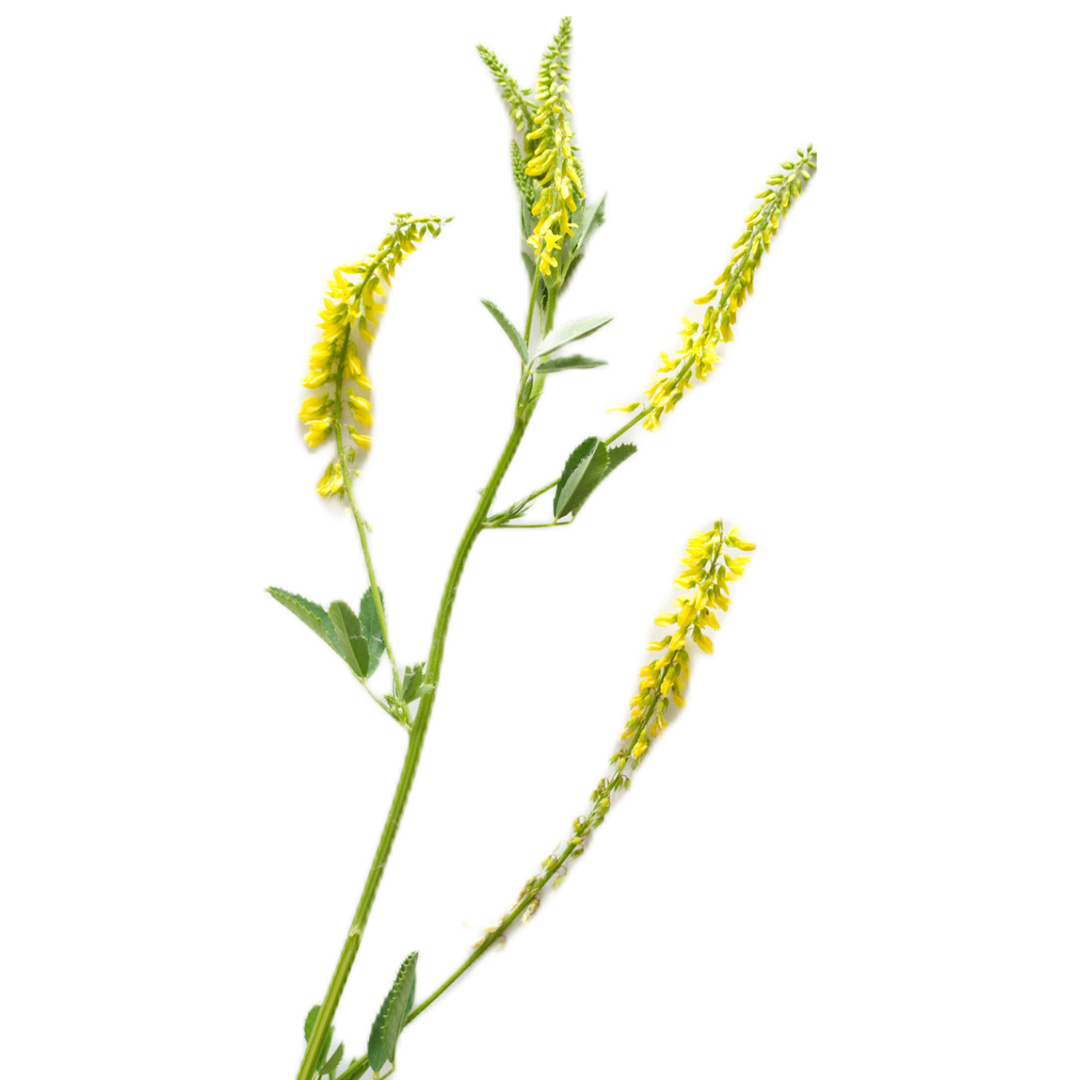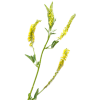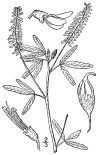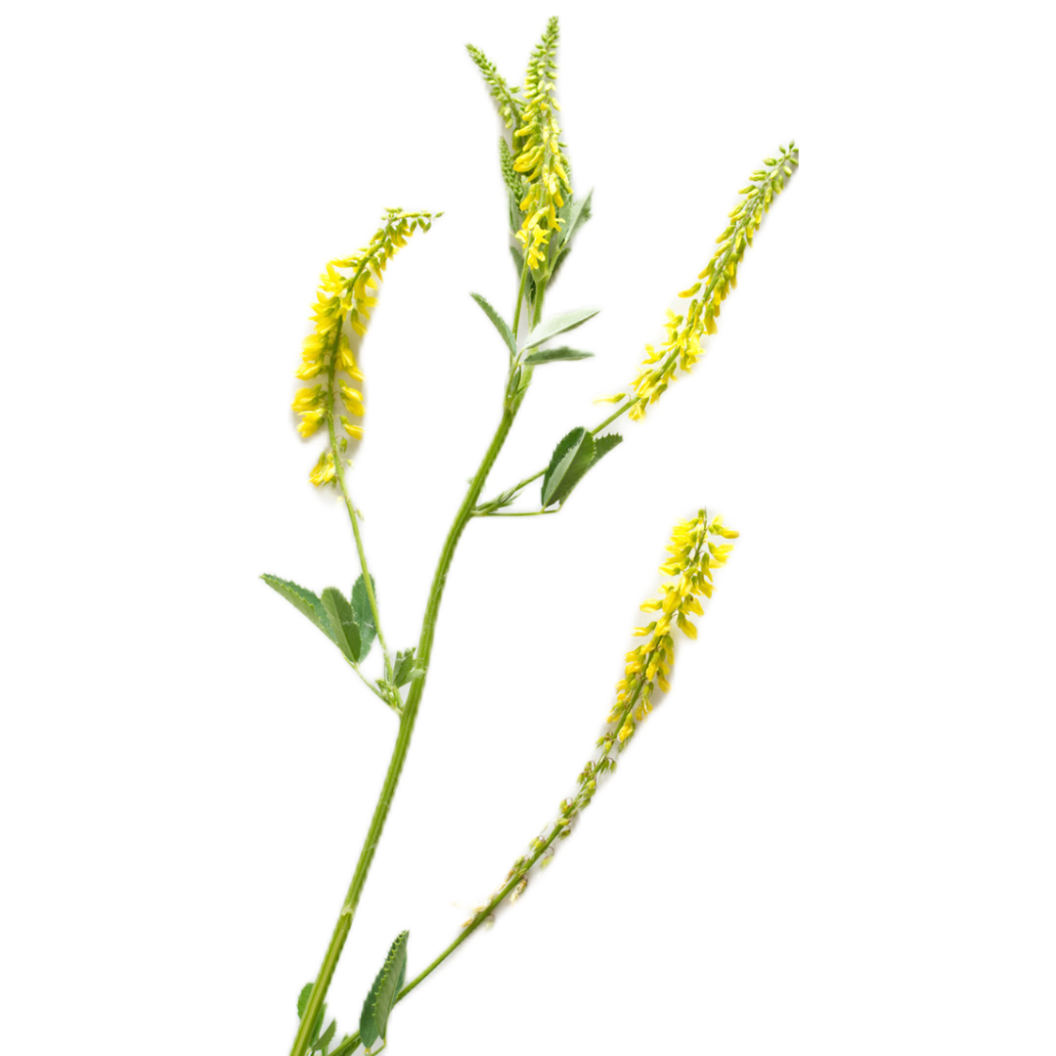





Yellow Sweet Clover
DESCRIPTION: Yellow sweet clover is a type of weed that is known for its yellow flowers and sweet fragrance. It is often found in fields and along roadsides, and can grow quite tall, up to 6 feet in some cases. Despite its sweet smell, it is not typically used for culinary purposes, as it can have a bitter taste. It is considered a weed because it can be invasive and compete with other plants for resources.
SCIENTIFIC NAME: Melilotus officinalis
OTHER NAMES: Yellow Melilot, Ribbed Melilot, King's Clover, Honey Clover, Sweet Clover
LEAF TYPE: Broadleaf
FLOWERS: The flowers of yellow sweet clover are small and yellow, and they grow in clusters on tall, slender stems. They have a sweet, pleasant fragrance that is similar to vanilla or freshly cut hay. When the flowers bloom in the summer, they can attract bees and other pollinators. Despite their small size, they can be quite numerous and give the plant a bright, cheerful appearance.
LEAVES: The leaves of yellow sweet clover are small and green, and they grow in groups of three on long, thin stems. They are soft and delicate to the touch, with a slightly fuzzy texture. The leaves have a mild, earthy smell when crushed, but they do not have a strong aroma like the flowers. The edges of the leaves are slightly serrated, giving them a jagged appearance. Overall, the leaves are unremarkable in appearance.
LIFE CYCLE: Perennial
HOW TO IDENTIFY: Yellow sweet clover can be identified by its tall, slender stems and small, yellow flowers that grow in clusters. The flowers have a sweet smell, similar to vanilla or freshly cut hay. The leaves of the plant are small and green, and grow in groups of three on long, thin stems. They have a slightly fuzzy texture and are mildly fragrant when crushed. The plant is typically found in fields and along roadsides, and can grow quite tall, up to 6 feet in some cases. It is considered a weed because it can be invasive and compete with other plants for resources.
MECHANICAL CONTROL RECOMMENDATIONS:
1. Mowing - More Info
2. Cutting and Uprooting - More Info
3. Tilling - More Info
4. Smothering - More Info
5. Grazing - More Info
6. Prescribed Burning - More Info
7. Repeated Disturbance - More Info
CHEMISTRY RECOMMENDATIONS:
"Pre-emergent herbicides:
Atrazine: Atrazine is commonly used to control grassy and broadleaf weeds in agricultural and non-crop areas. It can provide pre-emergent control of some broadleaf weeds, but its effectiveness against Melilotus officinalis may vary.
Isoxaben: Isoxaben is used to control broadleaf weeds and is often found in lawn weed control products. It acts by inhibiting cell wall formation in germinating weed seeds.
Pendimethalin: Pendimethalin is effective against many grassy and broadleaf weeds. It forms a barrier in the soil that prevents weed seeds from germinating.
Prodiamine: Prodiamine is commonly used in turfgrass management and controls a range of grassy and broadleaf weeds. It can provide pre-emergent control by inhibiting cell division in germinating seeds.
Dithiopyr: Dithiopyr is often used in lawn care to control both grassy and broadleaf weeds. It can provide pre-emergent and early post-emergent control.
Post-emergent herbicides:
2,4-D: 2,4-D is a commonly used selective herbicide for controlling broadleaf weeds in various settings. It's often used in lawns, pastures, and non-crop areas.
Dicamba: Dicamba is another selective herbicide that targets broadleaf weeds. It's often used in combination with other herbicides for more comprehensive control.
Triclopyr: Triclopyr is effective against many woody and broadleaf plants. It can be used in both grassy and non-grassy areas.
Clopyralid: Clopyralid is often used to control certain tough broadleaf weeds, including legumes like clover. It can be effective when used as a spot treatment.
Metsulfuron-methyl: This herbicide is effective against a range of broadleaf weeds, including some legumes. It's commonly used in turfgrass and non-crop areas.
Glyphosate: Glyphosate is a non-selective herbicide that can control a wide range of weeds, including broadleaf and grassy weeds. However, it will also kill desirable plants, so caution is needed when using it in areas with non-target vegetation.
Selective herbicides:
2,4-D: A widely used selective herbicide for controlling broadleaf weeds in lawns, pastures, and non-crop areas. It may provide some control over Melilotus officinalis due to its broad-spectrum activity.
Dicamba: Another selective herbicide effective against broadleaf weeds. It's often used in combination with other herbicides for comprehensive control.
Clopyralid: Clopyralid targets broadleaf weeds, including some legumes. It might have some efficacy against Melilotus officinalis, but careful application is needed to avoid harming desirable plants.
MCPA: MCPA is used to control a variety of broadleaf weeds in lawns, turf, and non-crop areas.
Triclopyr: While effective against woody plants, triclopyr might have some impact on certain broadleaf weeds. It's used in both grassy and non-grassy areas.
Fluroxypyr: Fluroxypyr targets many broadleaf weeds and is used in various settings.
Quinclorac: Quinclorac is used to control broadleaf and grassy weeds in lawns and turf.
Non-Selective herbicides:
Glyphosate: Glyphosate is one of the most widely used non-selective herbicides. It kills a broad spectrum of plants, both grasses and broadleaf weeds. It's important to note that glyphosate can affect desirable plants as well, so it should be applied with caution and targeted carefully to avoid damage to non-target vegetation.
Glufosinate: Glufosinate is another non-selective herbicide that can control a wide range of weeds, including both grasses and broadleaf plants. Like glyphosate, it can also impact non-target plants.
Diquat: Diquat is a contact herbicide that affects the green tissue of plants it comes into direct contact with. It's often used for spot treatments in non-crop areas.
Paraquat: Paraquat is another contact herbicide that damages plant tissues on contact. It's used for various weed control applications, including non-crop areas.
Pelargonic acid: This is a naturally occurring fatty acid that acts as a desiccant, causing rapid dehydration of plant tissues. It's commonly used in organic gardening and as a spot treatment.
Sodium Chlorate: Sodium chlorate is a strong oxidizing herbicide that can kill a wide range of plants. It's often used for vegetation control in non-crop areas.
Recommended Prevention
Recommended Control

